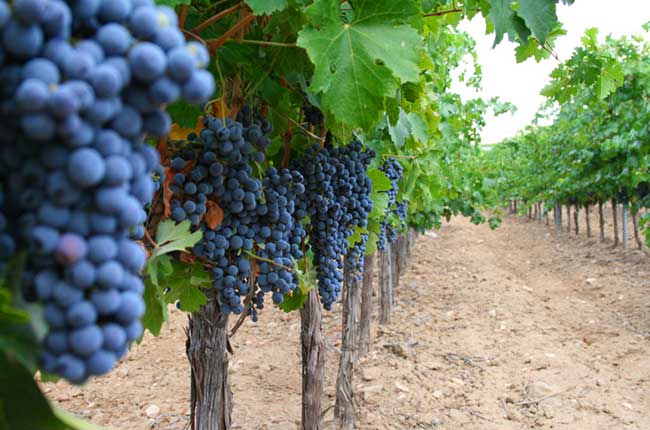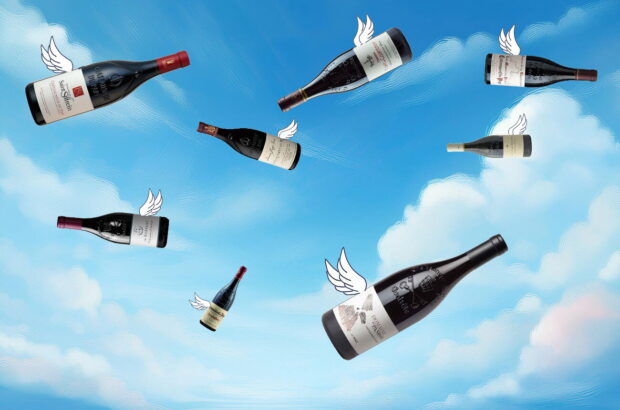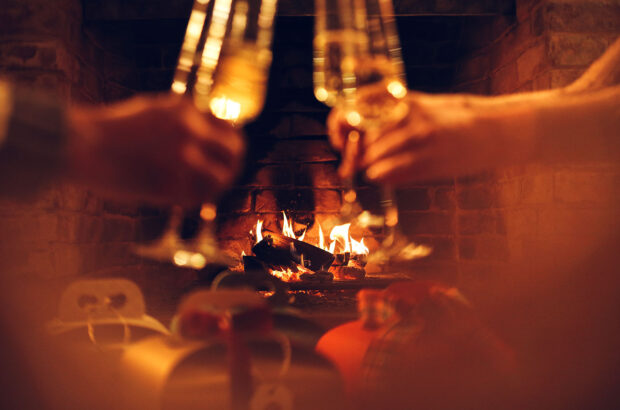Jane Anson explores Rioja terroir with fresh eyes and finds there is a fightback in the Spanish region among those seeking to promote its diversity.
There is a back road into Rioja from France that I cannot recommend highly enough. It scales the Pyrénées mountains, through winding country passes that switch between French and Spanish Basque villages.
You pass hand-made signs offering Baigorre ham, Pryénées brebis, Espelette peppers, fresh river trout and spicy Basque chocolate. The backdrop zigzags between dense swathes of oak, beech, fir and birch forest and wide-open vistas across mountains and fertile valley floors.
You arrive in Rioja not only exhilarated, but with a clear understanding of the influence that altitude and orientation exerts over these wines. Rioja sits within its own fruitbowl of mountains, most notably the Obarenas and the Cantabrias, with dramatic escarpments from Sierra de la Demanda to Sierra de Valdezcaray. Its soils are a jumble of slates, limestones, sandstones, loam, gravels and clays, as you would expect in an area so clearly governed by shifting tectonic plates, cut through by the fast-flowing Ebro river. And yet, the move to talk about this has been a weirdly long time coming.
When learning about wine in the classroom, Rioja is seen as one of the good guys, the establishment figure of quality regions in Spain. And yet there’s an uncomfortable complacency at its heart that is causing increasing frustration.
It’s been just over two years since my last visit, and I was struck by how many winemakers are now openly lamenting the negative impact of big brands and industrial production on the region’s quality image. The focus of anger seems to be directed towards the system of labeling according to length of ageing (so the Joven, Crianza, Reserva and Gran Reserva that we see on wine labels) that forms the backbone of Rioja’s traditional sales and marketing.
The biggest surprise, for me, is that this has taken so long. Why don’t more Rioja producers make a noise about the fact that when the region does talk about geography, it is usually only by dividing the wines into the three distinct regions of Rioja Alta, Rioja Alavesa and Rioja Baja? There are over 140 villages across Rioja, on both the Left and Right banks of the Ebro, and yet it is forbidden – actually forbidden – to mention them on the wine labels, according to rules set by the Consejo Regulador regional wine body.
‘There is a blanket temptation in Rioja to approach wine only through what happens in the cellar,’ Alberto Saldon Maté of Sierra Cantabria says. ‘The usual business model is brands rather than vineyards, and the usual approach is to blend grapes from across the entire region. Both of these things undermine the image of quality’.
This family-owned group, headed up by Marcos Eguren, is at the forefront of the move to reclaim the importance of place. Around 25% of the grapes they use are bought in from other growers, but their family bottlings such as San Vincente and La Nieta use only their own vines.‘We avoid putting the traditional terms such as Reserva or Gran Reserva on our labels, and instead bottle according to site and terroir,’ says Saldon Maté. ‘We are happy to use the generic Rioja label for our single-vineyard wines, as the usual distinctions are often little more than box ticking.’
I loved the discussion at Sierra Cantabria, but the wines have plenty of ‘modern Rioja’ signatures in the form of 100% tempranillo and serious amounts of new oak and I was still left wondering what Riojan terroir really meant. It wasn’t until I arrived at Remelluri, in the lower foothills of Sierra de Tolono, that I started to feel closer to an answer.
Remelluri is one of the oldest properties in Rioja Alavesa, near the hamlet of Ribas del Tereso. Its setting gives you that same wild, electric jolt that you get from approaching Chalone in California, or Glenwood in Franschhoek. Within minutes of arrival we were walking through the vineyards up a dusty mule track that led to the ruins of Monte Tolono monastery, abandoned in 1422 after the monks struggled with the harsh mountain climate. We climbed up to a ridge that overlooked the vines, the path heavy with the scent of wild anis, thyme, rosemary and sage. The vineyards here are set across 200 plots, with an average size of just one acre. They lie at the highest elevation in the region, south-facing and protected from the winds that often cause nail-biting harvests (one of the reasons that winemakers prefer to blend from across the region, making use of the sugar-rich tempranillo grapes from the hotter Rioja Baja).
I knew of owner and winemaker Telmo Rodriguez, followed some of his brilliant wines from sites around northeast Spain in Galicia and Toro, but had ever been to his home estate. He is often called Rioja’s prodigal son, as he spent over a decade doing his own thing before returning to work alongside his sister Amaia Rodriguez Henandorena at Remelluri in 2010.
He is also the poster boy for Rioja terroir driven wines, and since 2010 has ensured that Remelluri bottles the grapes that it buys from local growers into a separate range, Las Lindes de Remelluri, leaving his family wine to express the singular character of its own vineyard.
‘I wanted to reflect the real Remelluri,’ Telmo tells me. ‘Too many decisions in Rioja are made by managers and commercial people, and inevitably that has taken the region away from the vines. My starting point has always been to search out the original taste of Rioja, to discover the potential of the best vineyard sites, the grand crus’.
The best way to understand what Remelluri is about is to try the estate white wine – a field mix of nine different varieties that defies easy description – a squeeze of citrus zest, a clutch of wild herbs, a lick of wet stones. The best way to describe it is of tasting exactly of itself. Right, as Sylvia Plath once said, like a well done sum.
The reds ask the same questions, and are equally a reflection of the historical diversity of Rioja – a region that used to be home to 70 grape varieties and is now too-often given over to just tempranillo and gernacha (grenache). One plot in the Remelluri vineyard is planted with over 20 historical varieties, used as a nursery to maintain genetic diversity. Bush training is being reintroduced, as are terraces, and a variety of concrete tanks, oak barrels and large-sized oak vats – some new, some old – are used to age the wines.
These are wines to fall in love with. I did, and I hope you do too. But the man who makes them is restless, conflicted and searingly honest.
‘By cutting out bought-in grapes, reducing yields by 40% and introducing a second wine, I have increased the cost of making Remelluri drastically. Doing this makes me anti-competitive and the worry is that I won’t be able to continue. It’s why so many producers here are happy to turn out supermarket wines – there is a market for them, and it’s easy. One of the problems is that Rioja has so many natural advantages that even the cheaper wines taste good. For me, those ‘false good’ wines make it clear that with the right viticulture and an honest approach to terroir, Rioja can equal the greatest wine regions in the world. But it will take bravery and curiosity to get there’.







